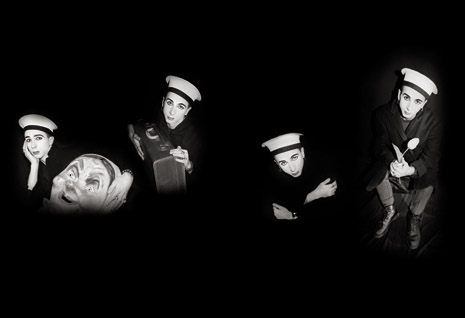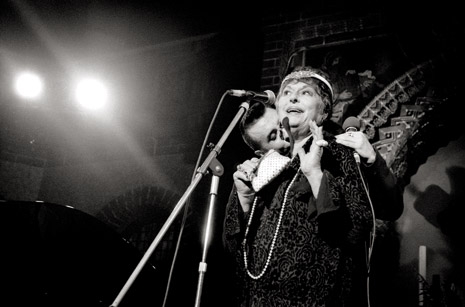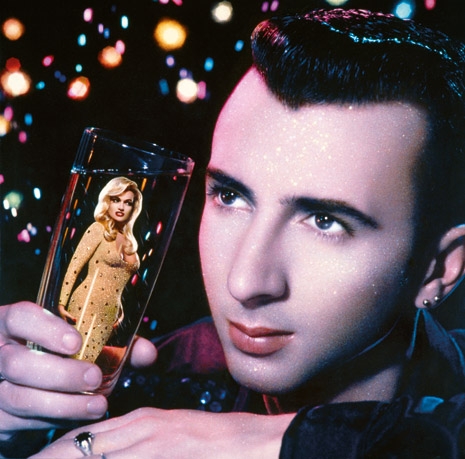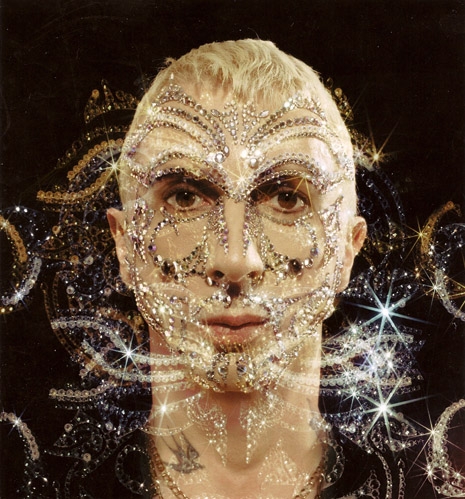
First Third Books, the London and Paris-based publisher of deluxe coffee table books devoted to counterculture (like Sheila Rock’s Punk +) and extremely in-depth celebrations of particular groups and performers (Felt, Saint Etienne, Genesis Breyer P-Orridge) are coming out with another of their beautiful monographs in June—this volume concentrating on the life and career of the great Marc Almond.
Marc Almond will be limited to 1300 copies worldwide, hand numbered and bound in purple fabric. There will be 300 copies of the standard edition priced at £40 and 1000 copies of a limited special edition for £60 that includes unreleased songs on a 7” single. The first 500 copies sold of the limited edition will also be signed by Marc.
Back in March, when the book was first announced, Almond remarked:
“Putting a book like this together is very difficult because it brings up all kind of emotions. But it’s important to me to paint an honest picture, which means that as well as the many wonderful memories, working on the book has also forced me to resurrect certain things I’d rather hoped had been consigned to history. But that’s great. It would be too easy to fall into the comfort zone of nostalgia. The book goes much further than that. The whole process has been bittersweet and yet cathartic. I’ve really enjoyed working on it and it looks fantastic.”
It does. It’s the ultimate Marc Almond coffee table book and the perfect companion to his hilariously bitchy autobiography, Tainted Life (Ever the diva, Almond settles a score in every chapter! Highly recommended if you like pop star tell-alls.)
As longtime readers of this blog know, I am a massive Marc Almond fan—I have been since I saw my father fuming mad after Soft Cell ruined his Saturday night by performing “Tainted Love” on the Solid Gold TV show—so I’m thrilled to be able to offer a selection of photos from this amazing book, along with Marc’s own captions, and some related videos.

Youth: In 1964, I was seven. The world was still in black-and-white, still very much post-war, still austere, with poor street lighting and simple foods. But much of my world revolved around television pop shows like Ready, Steady, Go!, Thank Your Lucky Stars and Juke Box Jury. One of my first pop memories was seeing Sandie Shaw barefoot on RSG! singing ‘(There’s) Always Something There To Remind Me’. I was always singing that song. I loved pop from a very early age.

Photo: Peter Ashworth
Non-Stop Subversion: This was our preferred cover for Non-Stop Erotic Cabaret but the record company thought it too menacing and subversive. Dave looks quite convincing in the role of switchblade-carrying psychotic!
“Martin” live on ‘The Tube’ in 1983
 Photo: Peter Ashworth
Photo: Peter Ashworth
Marc and The Mambas: I always knew Soft Cell had a limited shelf life, that in order to create a longer, more lasting career I’d have to alienate the mums and dads and commit a kind of commercial suicide. Torment and Toreros took that idea a lot further; I always call it the document of a nervous breakdown. But through my blurred vision, that sprawling, flamenco-influenced gothic opera in red and black was definitely the birth of me as an artist.
Below, “Black Heart,” the album’s dramatic centerpiece:

Warhol: With Dave meeting Andy Warhol while making Non-Stop Erotic Cabaret in New York.

Photos: Ben Thornberry
Mother Fist: Mother Fist [1987] is probably my favourite album. It has a particular sound and feeling throughout, a result of spending a lot of time in Barcelona. It was a very decadent place during the mid-’80s, before they started cleaning it up for the [1992] Olympics. It was full of lovely old bars, some selling absinthe, with all kinds of people in them and out on the streets – transsexuals, the roughest prostitutes, sailors, pimps, drug dealers, immigrants. It was all very carnivalesque, which explains the carnival head. You’d see people like Almódovar and Lindsay Kemp. The spirit of Jean Genet was never far away.
An incredibly powerful performance of Mother Fist’s “Saint Judy” at the London Palladium as part of the Soho Jazz Festival, October 12, 1986:

Ruby Red: I’d intended Stories Of Johnny [I think he means Mother Fist—RM] to be a double album, but it was becoming expensive so Virgin pulled the plug on it. My response was to make a series of near-the-knuckle videos with Peter ‘Sleazy’ Christopherson [Throbbing Gristle, Psychic TV, Coil], who was great to work with. The film for “Ruby Red"was full of dripping blood, transvestites, writhing red devils and me made up as a vampire, complete with pointed ears and red eye caps. The beginning of the end of my relationship with Virgin.
Below, the “Ruby Red” promo video:

Nico: With Nico in a break from recording our duet,”Your Kisses Burn.”

Photo: Phil Nichols
Agnes Bernelle: Performing “Kept Boy” with actress and singer Agnes Bernelle. Her father had written cabaret songs back in Berlin’s Weimar days and she kept the tradition going. I’d seen her on the Wogan show and told Stevo I wanted to work with her. “Kept Boy” was a little operetta we recorded together for The Stars We Are. I wrote another song for her, “It Was Me,” all about the devil’s wife being the power behind the throne. It was included on her album for Some Bizzare, Mother, The Wardrobe is Full of Infantrymen [1990].
Below, live at the Passionchurch, Berlin, 1991 with Agnes Bernelle

Photo: Pierre et Gilles
Pierre et Gilles: With Marie France, cabaret star and Pierre et Gilles’ favourite muse, for the cover of ‘A Lover Spurned’ [1990]. After I read a piece about Pierre et Gilles in a magazine, and saw what they did, I knew I had to work with them. I visited them in Paris, we all became great friends, and they introduced me to a side of the city I’d not explored before – a real adventure full of great characters and enchanted places. I call it my Paris period.
Below, the Pierre et Gilles directed video for “A Lover Spurned”:

Photo: Michelle Robek
Monoculture: I instigated bringing Soft Cell back because I wanted to work with Dave again. We’d written some songs together for Tenement Symphony, and there’d never been any animosity between us. I wanted to know what we could do 17 years on. But as soon as it became a Soft Cell project, the old ghosts returned. Stevo owned the songs so we had to bring him back if we wanted to play them live. Dave didn’t have a manager so Stevo stepped in. But when we were writing and recording in the studio, it was great, the chemistry was still there. Dave could still write effective songs with fabulous hooks.
I liked a lot of Beauty Without Cruelty [2002]. It sounded like a 21st century Soft Cell record. But I didn’t think putting one of the best tracks [‘God Shaped Hole’] on a Some Bizzare compilation and replacing it with filler was a good idea. By the time we toured America, it had gone horribly wrong. Dave and Stevo seemed to bring out the worst in each other and animosity and sourness crept in. It was a shame. We’d had a lot of fun making the “Monoculture” video a few months earlier. Our last gig, in some club in Thessaloniki in Greece, was ghastly. It hadn’t been advertised, so hardly anyone turned up. Things had gone badly wrong. It was just like the old days. I thought, I can’t do this anymore.
Below, the “Monoculture” promo video:

Photo Damien de Blinkk
Stranger Things: What I like about this cover image for Stranger Things [2001] is that it looks like the album feels. It was a much more filmic sounding record, with loads of samples and a late-night trip-hop feel. Producer Jóhann Jóhannsson had a fantastic library of musical references in his studio in Iceland, and made a great-sounding record. It was my second album away from a major label [after 1999’s Open All Night], and I was enjoying the freedom of making a record without having a record company bigwig standing behind me interfering.
Below, the “Glorious” promo video:
And finally, Marc Almond performing an absolutely show-stopping rendition of the Charles Aznavour number “What Makes a Man a Man?” at The Royal Albert Hall, September 1992